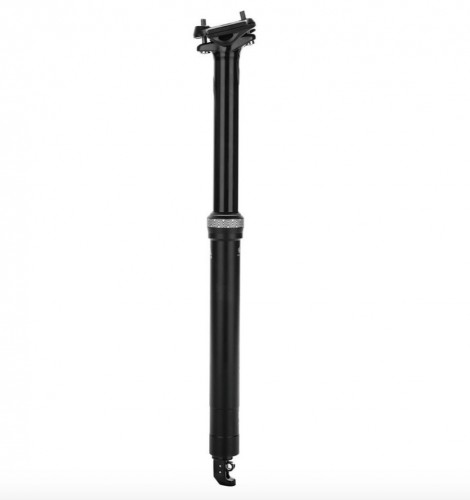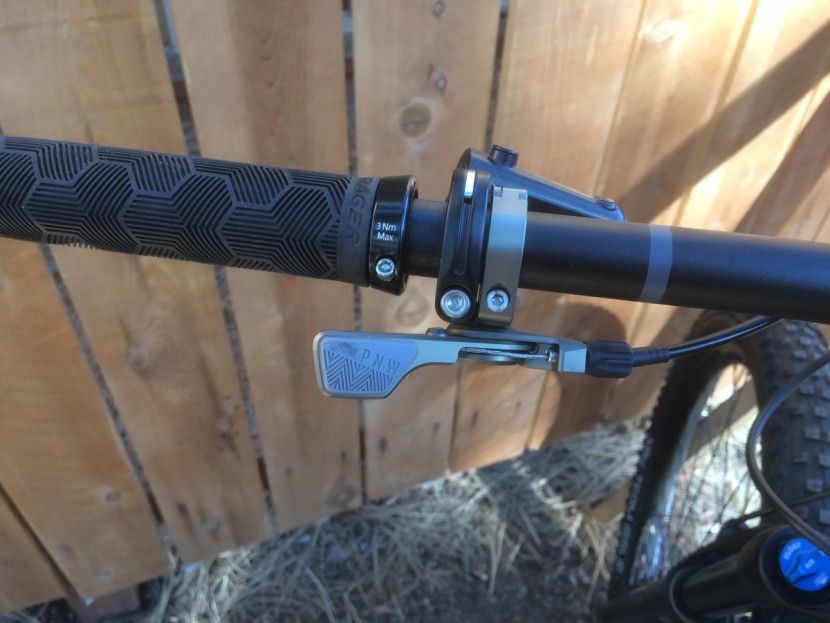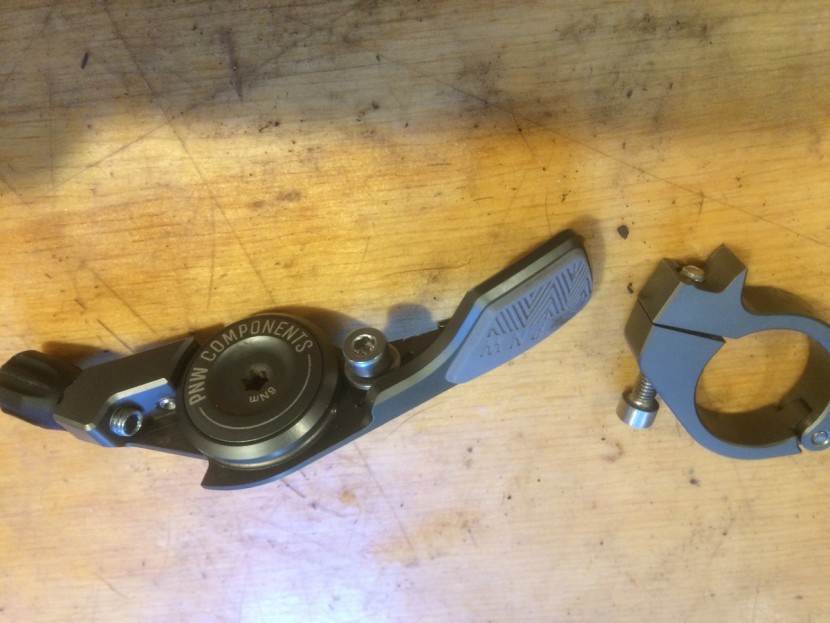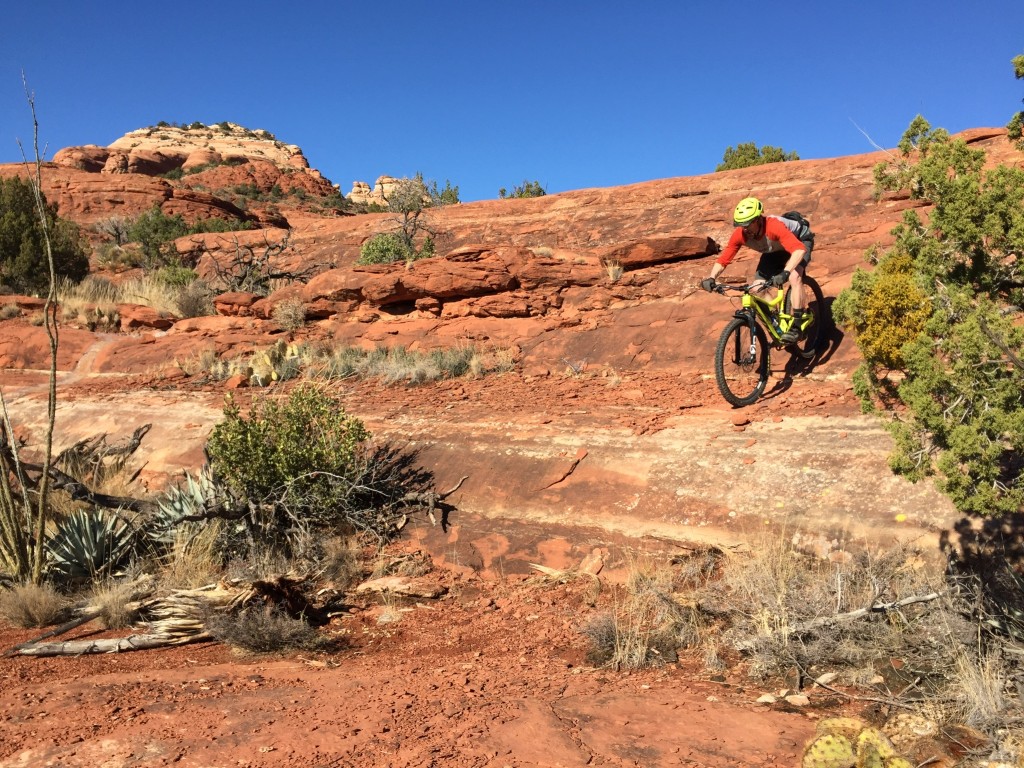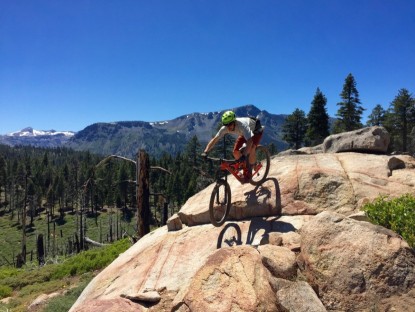PNW Components Bachelor IR Review
Our Verdict
Our Analysis and Test Results
A relative newcomer to the bike componentry market, PNW Components operates under the philosophy that they “hate how expensive bike parts are.” They make a few models of dropper posts, as well as a modest line of cockpit components like stems and handlebars. According to their website, PNW Components aims to create quality products at lower prices, and the cost of the Bachelor reflects that. Not only is the Bachelor competitively priced, but it performs as well as many of its higher-priced competitors, plus it comes with one of the best remote levers we've tested.
Smoothness and Functionality
The Bachelor post is a reasonably smooth and highly reliable dropper post. This post was a total “set-it-and-forget-it” situation, which is a high compliment at OutdoorGearLab. Once we got the post set up and properly dialed in, we didn't need to mess with it again. No adjustment of cable tension, no adjustment of the air spring, just solid and reliable dropper post performance…thumbs up.
The Bachelor uses an air cartridge to control its rate of return. This cartridge resembles an air spring in a suspension fork, and you can lower or raise the air pressure to deliver the rate of return that you prefer. If you like the post to return nice and slow, drop the factory air pressure a couple PSI. If you want a frighteningly fast return…add some air. When we set up this post, we added a touch of air, just to evaluate the process. Sure enough, adding air created quite a rapid return. We suggest sticking with the stock air pressure.
When you crest a climb and it is time to party, the lever actuates very easily. We will dive into the remote in more detail later in this review, but it doesn't take much force to get the remote to engage the drop. During the drop process, we found the Bachelor to be relatively smooth. This post is definitely on the silkier side of the spectrum, but there were a couple of noticeable imperfections in the stroke. We hesitate to label these imperfections as hitches or sticky points as this might be a little harsh, but they were periods of reduced smoothness. We don't view this as a huge, deal-breaking issue, but it is one thing that keeps the Bachelor from being the perfect post.
Cold weather performance was stellar. We rode this post in temperatures well below freezing. We found the post was relatively unaffected by the low temperatures. The return rate remained consistent, and it didn't feel as if it took any more force to compress the seatpost.
We messed with the cable tension a little bit throughout testing. It can be interesting to see how sensitive a particular seatpost is to cable tension. Some posts require tension to be absolutely perfect to function properly. Others are a little bit more flexible. If you somehow happen to have a little bit of slack in the system, the Bachelor handles it well. There will be a little slop in the very beginning of the lever throw, but aside from that, the post still operates well and stays in the correct position.
After our testing period, we checked the air pressure in our Bachelor post to monitor as to whether or not any air pressure was lost during testing. We found our post was still aired up to the same 300 PSI in it after testing. We tested in hot and cold weather conditions at elevations ranging from approximately 4000-9000-feet.
Saddle Clamp
The Bachelor post uses a nice and simple two-bolt saddle clamp with zero offset. A zero offset post has the center of the saddle clamp in line with the center of the post. Offset posts haven't quite made their way into the world of droppers yet, and we hope it stays that way. An offset post features a setback that puts the center of the saddle clamp behind the centerline of the post, and it is a way to mess with the fit.
Installing the clamp was relatively plain and straightforward. This will never be the easiest experience for users with big hands or fat fingers as it requires precision in tight spaces. Luckily, messing up this process usually only means you drop some nuts and bolts on the ground and start from scratch, there is no actual consequence. Once you have your saddle installed, there is little need to remove it. The only instance that will require you to remove the saddle clamp will be if you need to add or remove air from the air spring.
Remote
We purchased the PNW Loam Lever to test with our Bachelor post, and it is excellent. We have used a variety of remote levers during our years of using dropper posts. The Loam Lever is among the best. This CNC machined metal lever has a great shape and is of quality construction.
The standard bar clamp is simple and straightforward. You can mount the remote in two different positions, depending on how crowded your handlebar is. If you need the remote pushed outboard, use the left mounting hole. If you want it moved in, use the right one. The paddle-shaped lever is smart and uses a narrow connection with the remote that protrudes and gets wide near the end for a great feel against your thumb. The contact patch features a rubberized material for traction in a variety of conditions.
The remote lever throw is smooth and consistent. It doesn't have any hitches or changes in the resistance as you get deeper into the throw. We think the Loam Lever is the bee's knees, and it only contributes to how impressive the Bachelor is. The Loam Lever is compatible with most cable-actuated dropper posts that have the cut end of the cable at the remote, making it a nice upgrade for any dropper seatpost. It is also available in Shimano EV, Shimano I-spec II, and SRAM Matchmaker X mounting options.
Weight
The Bachelor weighs 701-grams with the remote, cable/housing, and the post. That makes it one of the heavier posts in our test class. We don't recommend worrying too much about dropper post-weight as this is a relatively insignificant location to house some weight. Adding weight to your wheels and tires is significant, adding it to the seat tube is not so big of a deal. As a result, the weight metric is only worth 10% of the final score.
Ease of Setup
The Bachelor posted a nice score in the ease of setup metric. Installation was straightforward and simple and required no more than 20-minutes.
The setup process was as simple as most cable-actuated seatposts. Start by routing the housing through your frame and attach ferrules to each end of the housing. Run the cable from the bottom of the post, through the housing, and into the remote lever. Find the right tension, clamp down the cable, and cut the excess. It can take a couple of attempts of cinching down the cable to find the correct tension window. That said, this is a very low-consequence process. If you are far too slack, simply loosen the clamp, take up some slack, and re-clamp the cable. Micro adjustments are made at the barrel on the lever.
Value
The PNW Bachelor is an excellent value at its retail price. It is sold as a post only for $239, and an additional sixty bucks gets you one of the best remotes that we've ever tested. This post delivers exceptional on-trail performance that is just a small step below the best-of-the-best. We love it.
Conclusion
The PNW Bachelor dropper post delivers exceptional performance at an impressive price point. PNW tends to fly under the radar in the conversation of the best dropper posts. Despite being a relative newcomer to the dropper post market, PNW knocked it out of the park with the Bachelor post. Installation is quite simple. The Loam 1x remote lever is dialed and features an ergonomic and simple design. The actuation is easy, and the drop and return of the post is relatively smooth and impressive. All of this performance comes at an impressive $300 price tag.
Other Versions and Accessories
The PNW Bachelor is available in a lot of flavors. This post is available in the 30.9, 31.6, and 34.9 clamp diameter. Travel is available in 125mm, 150mm, 170mm, and 200mm increments. Yes, 200mm is a ton of drop.
You can purchase this post with the Loam Lever, which we highly recommend. In addition, you can get the Puget Lever, the gravel-specific Drop Bar Lever, or without a lever at all.

